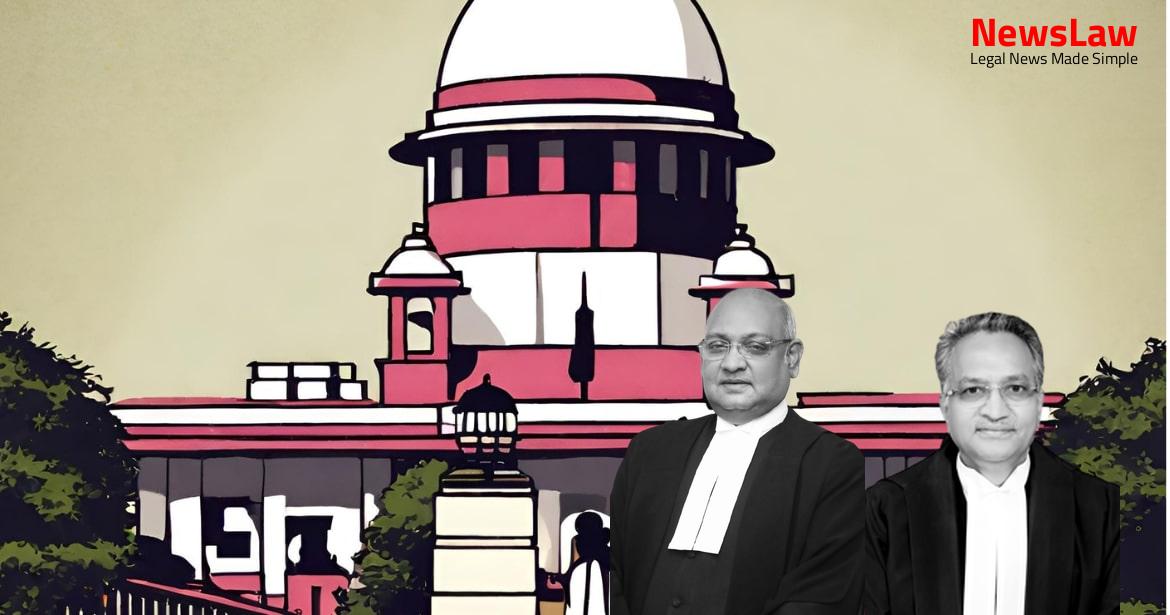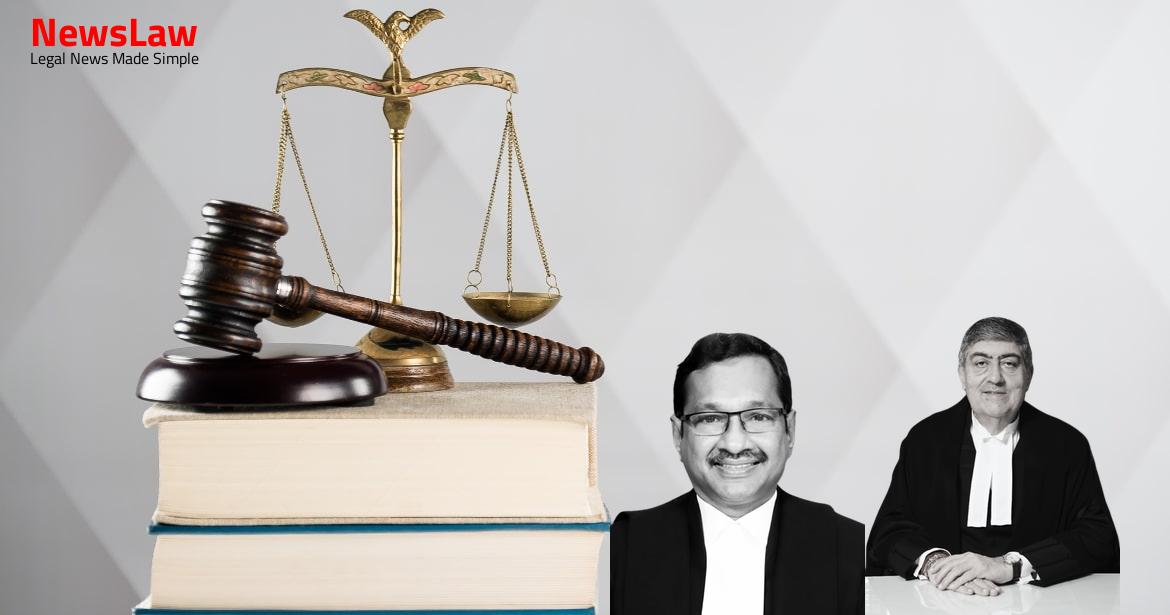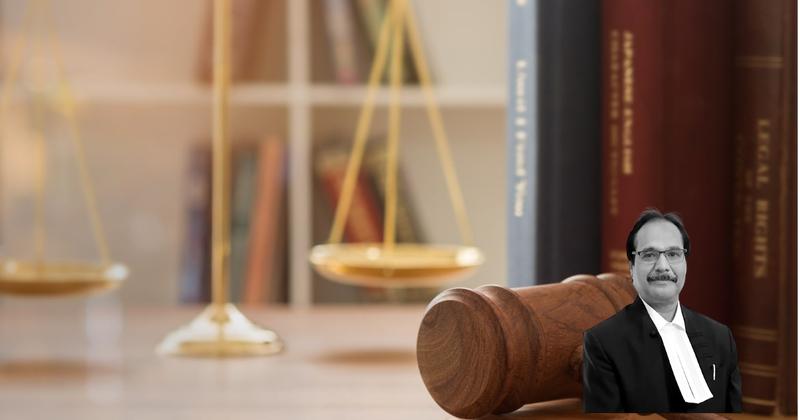In a landmark judgment by the Supreme Court of India, crucial aspects of collective liability within unlawful assemblies were discussed and decided. The case involved a detailed analysis of evidence presented by the accused, ultimately leading to convictions based on ocular, medical, and circumstantial evidence. The Court’s ruling emphasized the principles of vicarious liability and the importance of determining a common object within such assemblies. This judgment sets a significant precedent for future cases involving group offenses and individual liabilities.
Facts
- The Trial Court conducted a detailed analysis of the evidence presented by the accused.
- It found the defence witnesses to be either irrelevant or unreliable.
- The defence theories were rejected as the accused were found to have joined together to attack the complainant and his companions, resulting in injuries and the death of Dalip Singh.
- The High Court upheld the Trial Court’s judgment and order, convicting and sentencing the accused for various offenses under the Indian Penal Code.
- The accused were found guilty based on ocular evidence, medical evidence, and circumstantial evidence pointing towards their collective involvement in the offense.
- The Trial Court’s conclusion led to the award of varying sentences, including life imprisonment, to the accused persons.
- Appeals were filed before the High Court by the appellants and co-accused, some sentences were suspended pending appeal.
- A pardon was granted by the Governor of Punjab to one of the appellants and two co-accused, but the High Court affirmed the conviction of five accused persons and set aside the pardon.
- The High Court found the prosecution’s case fully established against five accused, while two were given the benefit of doubt.
- The High Court upheld the conviction of the appellants and other accused, rejecting the plea of alibi raised by one of the appellants.
- The power to grant pardon was deemed impermissible by the High Court, as it was based on perceived public opinion and not valid grounds.
- The Trial Court’s analysis included examination of prosecution evidence, testimonies of injured eye-witnesses, and medical officers.
- On 24.03.2001, Manjit Singh, Prem Kumar, and Narain Datt were found not involved in the crime and kept in column No.2 by the Investigating Officer (IO).
- Complainant Beant Singh moved an application under Section 319 CrPC to proceed against Manjit Singh, Prem Kumar, and Narain Datt.
- Charges were framed against all accused persons for various offences under IPC sections 302, 148, 326, 325, 323.
- Weapons including ghop and kirpans were recovered based on disclosure statements of different individuals.
- Multiple witnesses including injured eye-witnesses and medical officers were examined during the trial.
- In defence evidence, 13 witnesses were examined by the accused persons.
- Prosecution sought to withdraw the case against the appellant Manjit Singh, Prem Kumar, and Narain Datt but the request was declined.
- Accused Manjit Singh denied allegations and provided a detailed account in his statement under Section 313 CrPC.
- Testimony of informant Beant Singh remained incomplete due to his demise.
Also Read: Constitutional Validity of Domicile-based Reservation in PG Medical Courses
Arguments
- The learned counsel for appellant Sukhwinder Singh argued that there are material contradictions in the evidence and the essential ingredients of Section 141 IPC for formation of an unlawful assembly are not established.
- The counsel for appellant Manjit Singh contended that he was not present at the scene of the incident and referred to an alibi witness to support this claim.
- The absence of evidence regarding common object of the accused, lack of independent witnesses, and no recovery of the weapon of offence at the appellant’s instance, were highlighted as reasons for the appeal against his conviction.
- Previous enmity between the deceased’s family and the appellant was cited as grounds for implicating him in the case.
- The appellant’s counsel argued that his actions could only be attributed to lesser offences than murder, as he had already served time for those.
- The State’s counsel supported the conviction, stating that the evidence on record established the appellant’s involvement, including instigation and participation in the assault.
- The presence of deadly weapons and simultaneous assault by several accused supported the conclusion of an unlawful assembly with a common object, as per the State’s counsel.
- The plea of alibi was never suggested to the prosecution witnesses or taken in the statement under Section 313 CrPC.
- The made up witnesses produced in support of the alibi plea were considered and discarded by both the Trial Court and the High Court after thorough evaluation.
- The counsel for the respondent cited the case of Sahabuddin & Ors. v. State of Assam (2012) 13 SCC 213 as a reference.
- After hearing arguments from both sides and examining the evidence on record, the Court found no substance in the appeals of the appellants.
- The acquittal of two accused persons was also mentioned in the judgment.
Also Read: The Mystery of Strangulation: A Landmark Judgment by the Supreme Court of India
Analysis
- The prosecution case revolves around the testimony of injured eye-witnesses PW-5 Rajinder Pal Singh and PW-6 Gurnam Singh, which has been found reliable.
- The witness DW-9 Kulwant Singh, who supported the alibi of Manjit Singh, was discredited for being an interested witness and offering a queer and unnatural testimony.
- The High Court rejected the defence contentions, including the plea of alibi of Manjit Singh, after examining the defence evidence and material on record.
- The plea of alibi was not put to relevant prosecution witnesses, and Manjit Singh did not claim his absence from the site at the relevant time in his statement under Section 313 CrPC.
- The accused persons acted in concert, ensuring casualties among the complainant party members, and the common object was clearly aimed at causing harm.
- The attempt to withdraw the case against Manjit Singh was declined by the Trial Court, and the High Court upheld the rejection despite overruled opinions regarding his innocence.
- The unreliable defence witnesses could not disprove the prosecution’s reliable evidence, leading to the rejection of the baseless plea of alibi.
- The number of persons and common object are essential elements of an unlawful assembly, with each member sharing liability for the group’s actions.
- The principles of constructive liability apply, and the conduct of the accused at the incident scene solidifies their involvement.
- The defence witnesses failed to provide substantial evidence to change the course of the trial, and the prosecution’s case remained strong and unshaken.
- Section 149 of the Indian Penal Code establishes the principle of collective liability for members of an unlawful assembly
- The punishment under Section 149 is vicarious and does not require every member of the unlawful assembly to have committed the offense
- Two main ingredients for vicarious liability within an unlawful assembly are the commission of an offense and the offense being committed in pursuit of the common object of the assembly
- Acquittal of some accused individuals does not automatically entail the acquittal of all accused in an unlawful assembly
- Determining the common object of an unlawful assembly is based on the conduct, arms carried, and behavior of members during the incident
- Section 149 of the IPC holds every member of an unlawful assembly accountable for an offense committed by any member in furtherance of the common object.
- Incurring vicarious liability for the offense depends on whether other members knew beforehand that the offense was likely to be committed in pursuit of the common object.
- Common object is a crucial element of an unlawful assembly, which can be formed spontaneously.
- The conduct of the members of the assembly and their common intention to commit an offense are significant factors.
- Section 141 defines an unlawful assembly as a gathering of five or more individuals with the common object of committing a specific offense, such as mischief or criminal trespass.
- Section 142 states that knowingly joining an unlawful assembly makes one a member of it, with Section 143 providing punishment for being a member of an unlawful assembly.
- In the case of Govind Singh, the incident occurred in a sudden quarrel and in a spur of the moment.
- The appellant in that case threw a chimney lamp at his daughter, causing her death due to burn injuries.
- The court in Govind Singh’s case converted the conviction from Section 302 IPC to Section 304 Part-II IPC.
- The sentence of imprisonment was reduced to the period already undergone in Govind Singh’s case.
- There is no applicability of Govind Singh’s case to the facts of the present case.
Also Read: Land Reforms Act: The Legacy of Gutya – Timma Dispute
Decision
- The appellants are required to surrender before the Court within four weeks
- They must serve out the remaining part of their sentences
- The appeals have failed and are dismissed
Case Title: MANJIT SINGH Vs. THE STATE OF PUNJAB
Case Number: Crl.A. No.-001079-001079 / 2011



